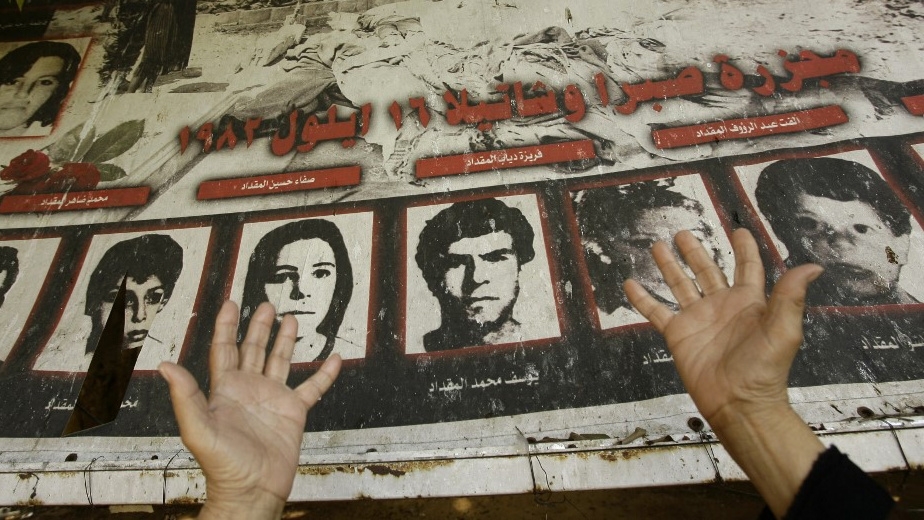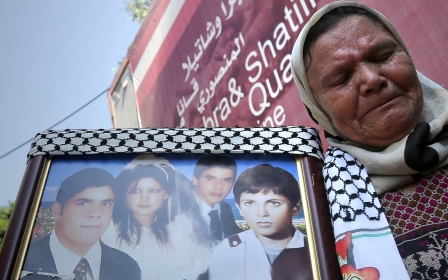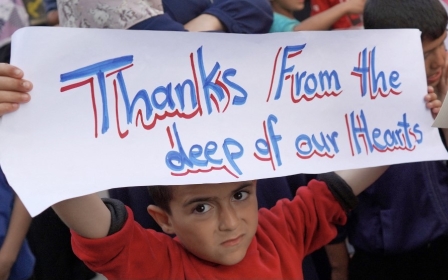Sabra and Shatila massacre: Four decades on, Israel's carnage has moved to Gaza

As Lebanon marks the 42nd anniversary of the Sabra and Shatila massacre executed in the Israeli-controlled Palestinian camps near Beirut, an unprecedented attack on Tuesday - which has also been ascribed to Israel - killed 12 people and caused thousands of injuries, as pagers commonly used by Hezbollah exploded.
The attack, however, was not limited to Hezbollah members, as Lebanon's health minister said many of those carrying the pagers were civilians, and two children were among the dead.
This horrific incident throws more salt in the wound of the Sabra and Shatila anniversary. Carried out from 16-18 September 1982 by the Christian Phalangist militia, it resulted in the slaughter of up to 3,500 people, including many children, women and elderly refugees - all as the Israeli army looked on.
As the anniversary of the Sabra and Shatila massacre coincides this year with both the pager explosions and the ongoing genocide in Gaza, we can observe the continuation of Israel’s brutal policies, alongside a significant change in the public’s response.
Sabra and Shatila was not an isolated incident, but rather just one major episode in a long series of Israeli massacres and ethnic cleansing dating back to the 1948 Nakba, during which hundreds of thousands of Palestinians were expelled from their land.
New MEE newsletter: Jerusalem Dispatch
Sign up to get the latest insights and analysis on Israel-Palestine, alongside Turkey Unpacked and other MEE newsletters
The war leading to the creation of the state of Israel that year also involved the Tantura massacre, in which around 200 villagers were killed, and the Deir Yassin massacre, where more than 100 Palestinians were killed.
The same policy was continued by the Israeli army post-1948 in Palestine and other Arab countries, from the 1970 Bahr al-Baqar school bombing in Egypt, to the 1996 Qana massacre in Lebanon.
In the Gaza Strip, Israel has committed a series of war crimes and massacres since its 2005 disengagement from the coastal territory, which was soon followed by the implementation of a punishing siege, and five major military assaults killing thousands.
In the current war, Israeli forces have killed tens of thousands of Palestinians, including many who were sheltering in “safe zones”, such as hospitals or UN-run schools.
Palestinians abandoned by the world
The long history of Israeli massacres against Arab civilians has only become more extensive and brutal over the years, for two reasons. The first is the inherently racist nature of the Zionist ideology, particularly as the state shifts ever-further towards the far right.
In Israel today, the ideology of Jewish supremacy has become mainstream. Since the attack by Hamas on 7 October, top Israeli officials have made numerous racist statements, including the infamous comments by Defence Minister Yoav Gallant comparing Palestinians to “human animals”.
Follow Middle East Eye's live coverage of the Israel-Palestine war
The second reason why Israel has been able to continue its pattern of massacres, especially in Gaza, is its international backing. Western nations have continue to ship arms to Israel, despite the rising Palestinian death toll, which now tops 41,000.
At the same time, Arab countries have shown little more than rhetorical support for Palestinians, with some continuing political and economic relations with Israel as though nothing had changed.
After nearly a year of war in Gaza, and without a serious international effort to stop the bloodshed, Israel has seemingly concluded that it can kill as many Palestinians as it wants, and level many of the territory’s homes, buildings and hospitals in the process.
Today, 42 years after those demonstrations, Israel continues to commit massacres in Gaza - but the Israeli public has not united in opposition
Days after the Sabra and Shatila massacre in September 1982, the Peace Now movement called for a demonstration in Tel Aviv, with around 400,000 people demanding an investigation into Israel’s role. The protest succeeded in pushing the government to establish the Kahan Commission, which found that Israel had “indirect responsibility” for the massacre, and led to the resignation of Ariel Sharon as defence minister.
Today, 42 years after those demonstrations, Israel continues to commit daily massacres and war crimes in Gaza - but the Israeli public has not united in opposition. On the contrary, Israeli politicians, journalists and ordinary people openly support the state’s genocidal acts.
Prime Minister Benjamin Netanyahu is gaining in the polls. Internal public opposition to the war is focused primarily on pushing the government to sign a deal to secure the release of the remaining Israeli hostages in Gaza.
While Israel’s ability to unleash brutality against the Palestinian people with impunity might appear to be a sign of power, historical experience tells us otherwise.
When occupation projects become more brutal, it may be a sign of the beginning of the end. Moreover, Israel is a state built on the narrative of “morality”, which has been dramatically undermined by the carnage in Gaza. Its continuing crimes against Palestinians will make normalisation with Arab states impossible, as Israel remains the primary threat to Arab peoples across the region.
The views expressed in this article belong to the author and do not necessarily reflect the editorial policy of Middle East Eye.
Middle East Eye delivers independent and unrivalled coverage and analysis of the Middle East, North Africa and beyond. To learn more about republishing this content and the associated fees, please fill out this form. More about MEE can be found here.





